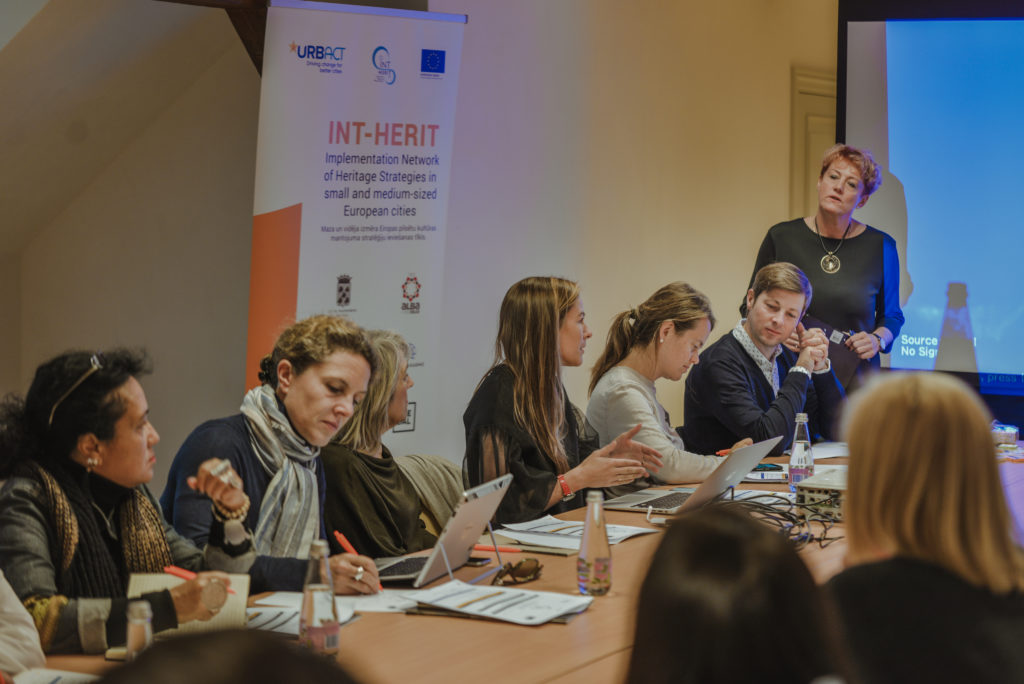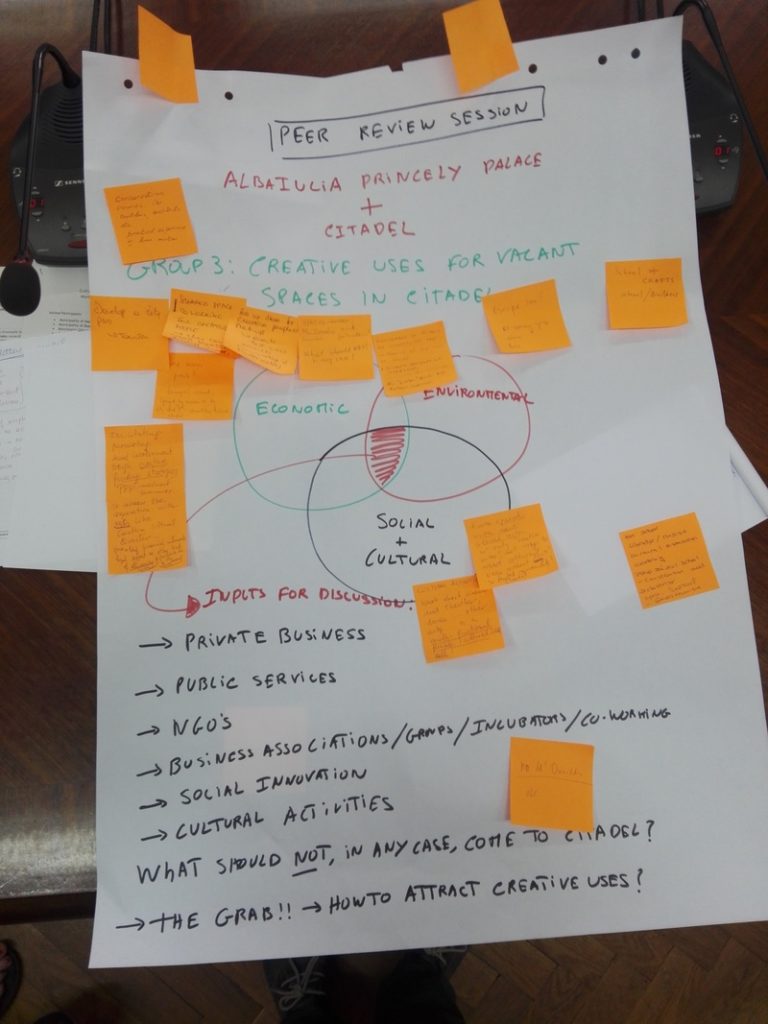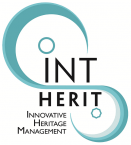Travel Diary
INT-HERIT is a network of cities that share and learn together in the implementation scenario of their cultural heritage management strategies. A type of methodology poorly known and tested for the first time by the URBACT Programme. Both for URBACT and for the other actors involved (cities, experts, interested parties…) it was an unknown landscape. What has happened along the way, what lessons are drawn from the INT-HERIT network, especially from the eyes of a navigator placed in the internal team of the Leading Partner of the Consortium? A journey in several steps from handwritten notes in the travel notebook…

Step 1
Observe, monitor, analyse, evaluate, capture knowledge from the process of implementation of the plans. This is not a common practice of either the promoter of the plans, or those other external organisations financing them.
Typically, controls have focused on the administrative performance, not considering, in general, the opportunity to put in place a knowledge capturing and learning system or device. The task is, as a rule, of a controlling nature and designed to guarantee a good administrative praxis, but the potential to wear a different hat and sleuth for the gossip and rumours of the operational framework, the “small print” of the process and, in general, to initiate an exhaustive scan of the implementation metabolism of the plan is just forgotten. A banquet to be served by lawyers and accountants, but there are not many systems analysts, pedagogues or philosophers in its preparation, to name just some professions who love the method.
In this sense, the internal work dynamics themselves, within the experimental implementation networks promoted by URBACT, have been cooked over low heat. From the beginning, the landscape of the implementation was defined around the margins of the road where challenges, both mandatory and optional, are often waiting for those travelling implementation. There is no doubt that they were good landmarks too. Implementation voyagers can easily return to them if they get lost, to find them turned into transversal axes of knowledge, articulators of observation and reflective analysis, carved menhirs to guide pilgrims.
Once the path was marked, the cities within these networks needed an operating system. Different experts and stakeholders were called to design the internal mechanism, a necessarily slow process of construction and deconstruction of the parts, as if it were a Meccano set, until they came up with the precise organs that would eventually set up the Operational Implementation Framework.
But let us leave the method in peace and return to the cities and their plans.

Step 2
The plans or strategies are the starting point of the implementation race for the cities of the INT-HERIT network. Let us look back on the itinerary followed for the past two years and take some comments from our logbook:
- The plan
Is it a plan when we talk about small cities and competencies that are not underlined as core municipal tasks such as heritage management? In many cases, they are unevenly connected and interconnected actions, given the high external dependence of these small local authorities in order to secure stable investment in objectives that go beyond their basic responsibilities. Between this apparent improvisation and the lack of a plan, reality forces us to be aware of the opportunities that external financing presents, as an interviewed mayor pointed out.
This being the case, the investment deficit is closely associated with the management deficit in all its components. Only municipal political commitment to safeguarding the hallmark of local heritage and, in short, to meeting human needs explains the cities engagement with cultural goods and hence with their citizens’ heart and soul. Pure European DNA.
In any case, with a more or less formal plan established, could you tell what are the expected results? What vision awaits at the end of the road, what scenario? Questions to strengthen the progress and prepare the trip, in sum.
- The environment
Comme ci comme ça, the perception changes daily. The political and social framework surrounding heritage management in small municipalities can be seen as an impossible challenge or a commitment that cannot be postponed. Centralised management of heritage assets still carries great weight in a large number of European States. Even in those countries where the balance of powers allows for municipal intervention on municipally-owned assets, small cities are in general left to their own devices. There, vertical integration is not the prominent feature, save in exceptional cases, where the extraordinary quality of the assets or a skilled local management triggers this process. Neither is cultural tourism the magic solution, nor the manna that will heal the infirm municipal coffers when the offer spreads from all corners of the continent, the available resources are scarce, and consumers do not always choose this kind of tourism, even though statistics indicate global increases. In smaller municipalities, quite often this income is a bird of passage, unable to provide economic sustainability to the management of cultural goods.
In summary, a bird’s-eye view does not seem to give vital clues or magical solutions to guide implementation, clearing up the doubts to come. Is it better to take the risk and make progress in the management of an archaeological site or let this opportunity sleep the sleep of the just?

- The operational framework
It is no coincidence that this point is at the heart of our journal. And what a pity that so very little attention is paid to the daily practice of municipal management. What little interest and what a lot of knowledge flowing into the waste stream.
If we emphasize the importance of the operational framework, it is because this is where we can appreciate the details of the small things. Here each piece, regardless of its size, is called to provide high-quality system performance or dangerously lead to failure.
Human and social values, behavioural patterns that should not be alien to management practices join the journey at this point on the road. Caution when it comes to undertaking certain investments or the regulated and scalable nature thereof, gains importance when weighing decisions. Anchoring socially and politically the steps to be taken, when talking about common heritage, is another applauded recommendation. The code for good implementers also includes a fair assessment of the surrounding constraints, and testing prototypes and pilot actions before drawing a highway to heaven. Everything is easier if done in good company, surrounded by professional teams with the know how to eventually cross the T’s and dot the I’s. It is essential to have the will, the effort and the commitment, they are the necessary fuel for the operational machinery to ascend when the road becomes steep. And if we have to change tack, we do. The important thing is that each long journey always begins with a first step and the path is made by walking. Learning from that is like the philosopher’s stone of implementation. A gem not always sought after.
- Monitoring and tracking
As a result of the above mentioned circumstances, passengers find themselves playing a board game. The game of Implementation. That is what our wager is called and it casts us inescapably, like Alice in her Wonderland, into a bottomless abyss, a sinister black hole.
And it is not that we were not warned. Without indicators, data collection, gait recorders, risk analysts and evaluators of the implementation, falls can be resounding and so it happens too often.
Some common sense would not hurt. Huge excuses have been heard when again and again we have talked about this challenge with INT-HERIT stakeholders in nine European countries. Regardless of the magnitude of the investments, the quality and the formality of the management plans, the typology and character of their patrimonial assets, here is the feature common to all cities that, believe it, almost without exception proves the rule.
We refer to common sense because it shares this socialising feature with heritage and human beings. It is assumed that it accompanies us as human beings and, by extension, those goods that are, or should be, part of the common weal. It does not seem difficult to send, as a standard practice, information and data trackers, place some probes to capture impacts, take advantage of internal and external information nodes on the side of the simplest of roads. And yet, how passive the listening, almost deafness conducting this piece of the implemented concert.
Even at Programme level, it has been very difficult to glean some example cases, some stories showing effective solutions related to this monitoring hunger, as paradoxical as it is ignorant in the full bloom of big data. Recognition of our unenlightenment?
- The performance
In this travel notebook the moment of execution motivates an anticipation movement. If, at the point of departure, the eye was invited to look in the distance at the implementation results, to specify them, once the gear unit is started up to execute the actions, the attention should not be distracted from the uses and users that results must reach and benefit.
Keep uses and users not only in mind but also, physically, in the space of the intervention. This is an advantageous warning for all seafarers that can prevent errors or imbalances in the final result.
This way, the risk of seeing infrastructures or facilities closed or implementation spaces that live in the limbo of broken dreams can be planned ahead, avoiding situations in which there is no backward step to take and no public way to follow. If the uses and users were at the control room from the starting line in this implementation trip, it would probably not be necessary to come to the rescue of any implementer arrested in the ‘in jail” square of the board, always eager to satisfy its hunger.
- Lessons learnt
Slightly changing the indolent practice described at the beginning of this notebook, things should go better as regards knowledge management, namely also implementation management.
The road widens once saved the initial uneven part, and the gains can illustrate the decision making of all stakeholders involved in the game: political representatives, professional teams, interested parties, private entities, citizens and organised society.

The final stage in a long tour
Under the asphalt, there are people, organised groups and participatory governance. Under the pavement, as a deep yearning that underlies the flagstones of the implementation road to any plan, the participatory method ready to be endorsed and finally come to the surface to stay. Praised its necessity, nothing remains but to deepen the practice. Let the implementation process not be shipwrecked once offshore. This requires a method adapted to the changing and executive circumstances that govern it.
At the end and the beginning, in the absence of rigid plans, may at least come flexible, operational and monitored dynamics of implementation. Any port in a storm in the turbulent implementation scenario.
